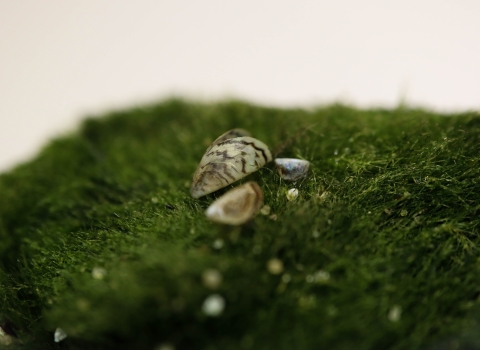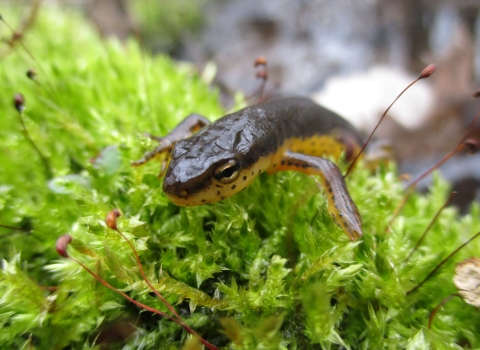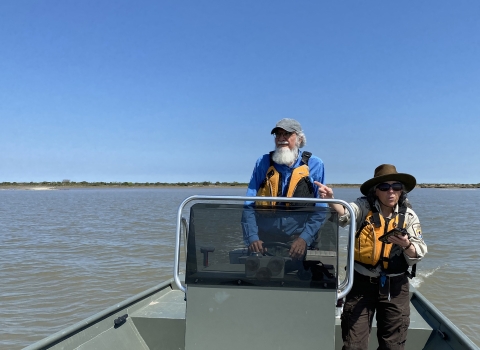Invertebrates, animals without backbones, are found all over the world in terrestrial, freshwater, and marine environments, and they have very important roles in nature. Invertebrate species number in the millions, and they make up about 95% of all animal species on Earth. Diversity among invertebrates is astounding, and invertebrates are organized into about 35 different phyla within the animal kingdom. While most invertebrate species are relatively small compared to humans, some species (like the giant squid) can be much larger. Across the many species and the many habitats they occupy, invertebrates play an important part in keeping the world’s ecosystems in balance. Invertebrates build and shape habitats, decompose organic materials, cycle nutrients, pollinate plants, clean and filter water, and serve as critical parts of food webs across the globe. Thus, this diverse and abundant group of animals is crucial to all of us and to our entire world.
If aquatic invertebrates are important to their ecosystems, why are we designating them as injurious?
In general, we add wildlife species to the injurious list (under 18 U.S.C. 42) if they are harmful in some way, such as a nonnative species that becomes invasive and preys on native plants or animals. In this case, we are proposing to list as injurious three types of invertebrates that may cause harm to aquatic ecosystems and to other important resources of the United States if they should become established in our Nation. These invertebrates proposed for listing include two genera of mussels and one crayfish, as follows:
- Asian pond mussels (genus Sinanodonta, currently with 26 species) – These mussels can grow quite large and are capable of displacing native freshwater bivalves including other mussels and clams.
- Golden mussels (genus Limnoperna, currently with one species, Limnoperna fortunei) – These smaller mussels encrust on many surfaces in the water and have the potential to not only displace other native bivalve species but also to damage human resources by biofouling infrastructure in the water.
- Marbled crayfish (Procambarus virginalis) – This crayfish species has recently emerged, likely as a genetic mutation of another species in trade, and it is able to reproduce by parthenogenesis (self-cloning), making it a substantial threat to displacement of native crayfish species and for damage to aquatic ecosystems and resources.
Evaluations conducted by the Service using data related to the characteristics and recognized impacts of these taxonomic groups of invertebrates indicate that these three taxa have potential to cause significant harm to our Nation’s aquatic ecosystems and to economic resources of importance if they were to become established in the United States. These conclusions support the proposed listing of these invertebrates as injurious wildlife.
Are these invertebrates already found in the United States?
One species of Asian pond mussel, the silty pond mussel (Sinanodonta woodiana), has been found in the Delaware and Raritan River watersheds in New Jersey. Since its discovery in the state in 2010, The State of New Jersey has been working to remove this species and to limit its impacts.
In 2024, the golden mussel was discovered in the Sacramento-San Joaquin Delta region of California, likely introduced unintentionally through international ship traffic. The current distribution of this mussel and options for its control in this region are still being collaboratively investigated and developed.
Currently, the marbled crayfish has not been identified in the wild in the United States.
How can people help safeguard our aquatic environments from these invertebrate taxa?
While we have not confirmed any of these invertebrate taxa to exist in the wild in the United States beyond the limited distributions mentioned above, we must remain vigilant for the presence of these and any other wildlife taxa listed as injurious. Anyone may help in these efforts by reporting sightings of these invertebrate taxa or other injurious wildlife to the proper authorities such as the U.S. Fish and Wildlife Service or their state, tribal, or local natural resource management agencies.
Other ways to be a good steward of the environment and to help prevent negative impacts of injurious wildlife include the following:
- Do not release these invertebrates, or any pet, into the wild, including your backyard. If you have a captive animal that you are no longer able to care for, try contacting any local aquarium hobbyist organizations, humane society, or other zoological group, as may be appropriate for the species.
- To assure that there is no release of larval stages of injurious species that may not be easily seen, neutralize any wastewater from aquariums or terrariums that might have come in contact with your invertebrates using household bleach (1/4 -1/2 cup per liter) for at least 10 minutes.
- Do not intentionally move aquatic animals such as invertebrates or fish from one body of water to another, and be careful not to move animals unintentionally through your boats, gear, or clothing.
What if you have one of these invertebrates as a pet?
If you own one or more of the species that are listed as injurious (see 50 U.S.C. §16.14), the proposed rule will not change anything for you, unless you want to import or transport to another location in the shipment clause. For that, permits can be requested only for scientific, educational, medical, and zoological purposes from the Service’s Permit Office. The application form may be obtained through the Service’s Permits website (3-200-42 - Import/ Acquisition/Transport of Injurious Wildlife under the Lacey Act (servicenowservices.com).






